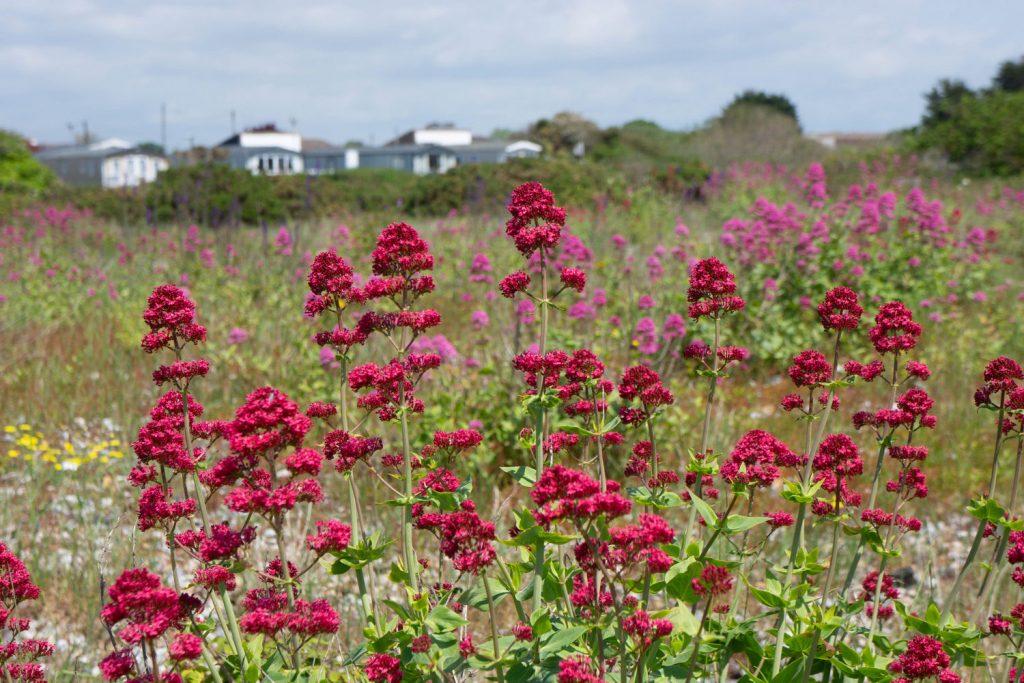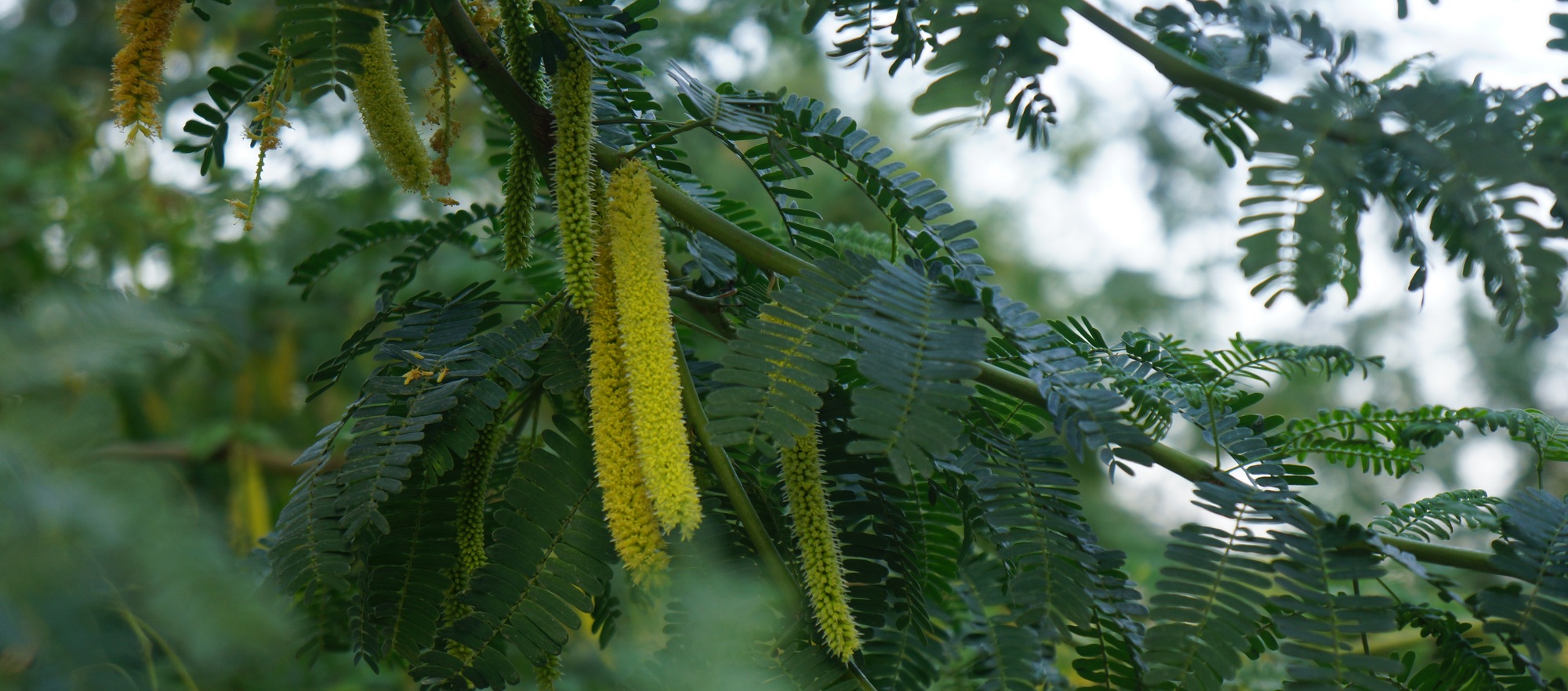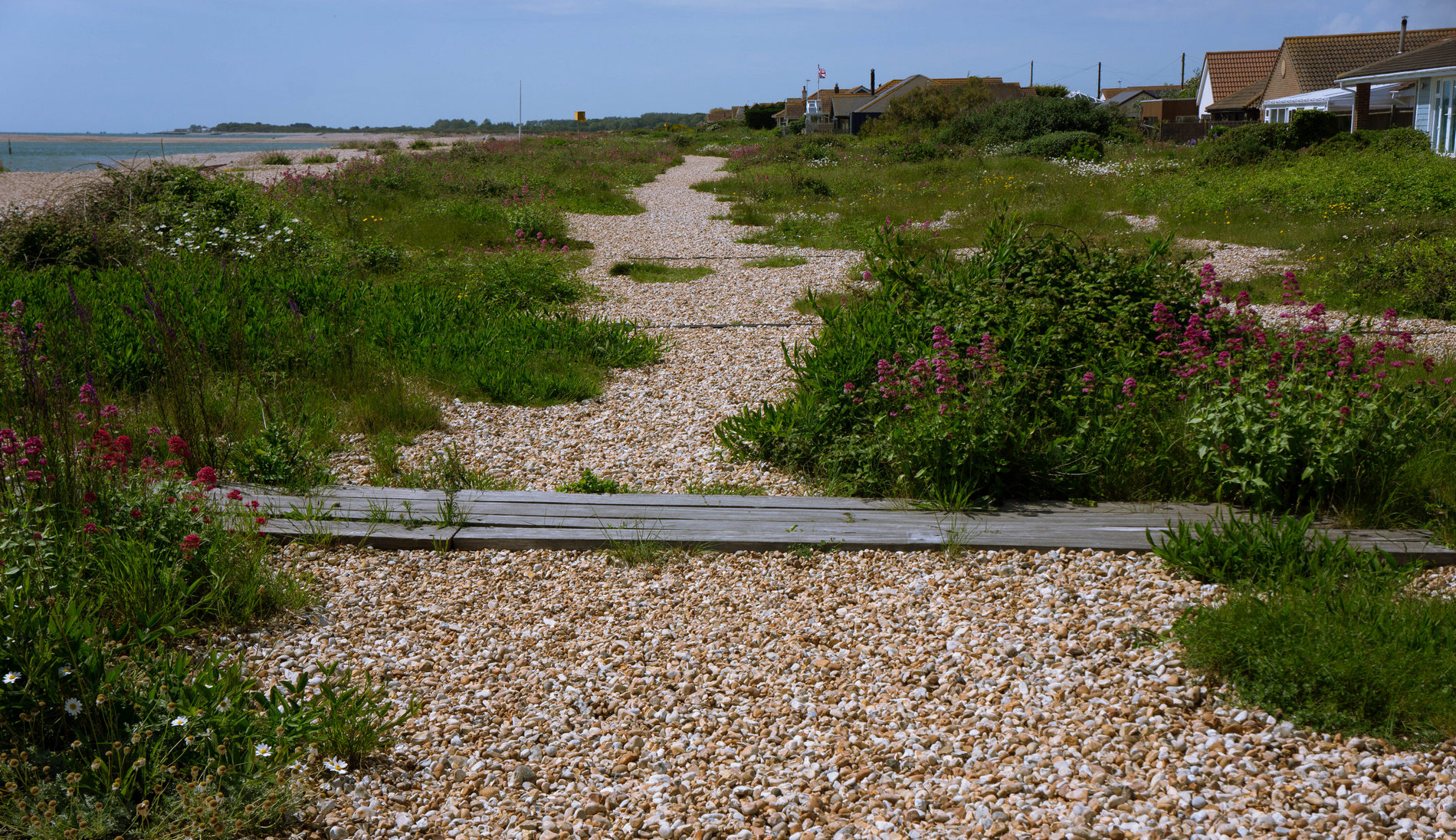Just down the road from me is my favourite beach, at Pagham, West Sussex. Famous for its harbour and wildfowl, it is the adjacent area of vegetated shingle that captivates me. The area has that slightly run-down British coastal seaside feel, the location not quite right for it to be a major tourist attraction, thankfully. Post war, houses appeared along the beach front, often made from old railway carriages. It’s all a bit scruffy, with the odd sprinkling of modern, architect designed beachfront properties amongst the low bungalows. I revel in it’s off-beat feel, but mostly especially for the hybrid ecosystem that has emerged on the beach.
I’ve posted many times on the unique nature of this area of vegetated shingle – which is a distinct habitat type in more stable areas of beach shingle and the UK seems to have more than anywhere else. Most such areas have just a few species present, such as sea kale, yellow horned poppy, red valerian etc. but this particular stretch is different, because of (I believe) the dwellings that open straight onto it, combined with the prevailing winds. Seed from these gardens has, over the years, been blown onto the shingle and many garden plants have established there, amongst the natives.
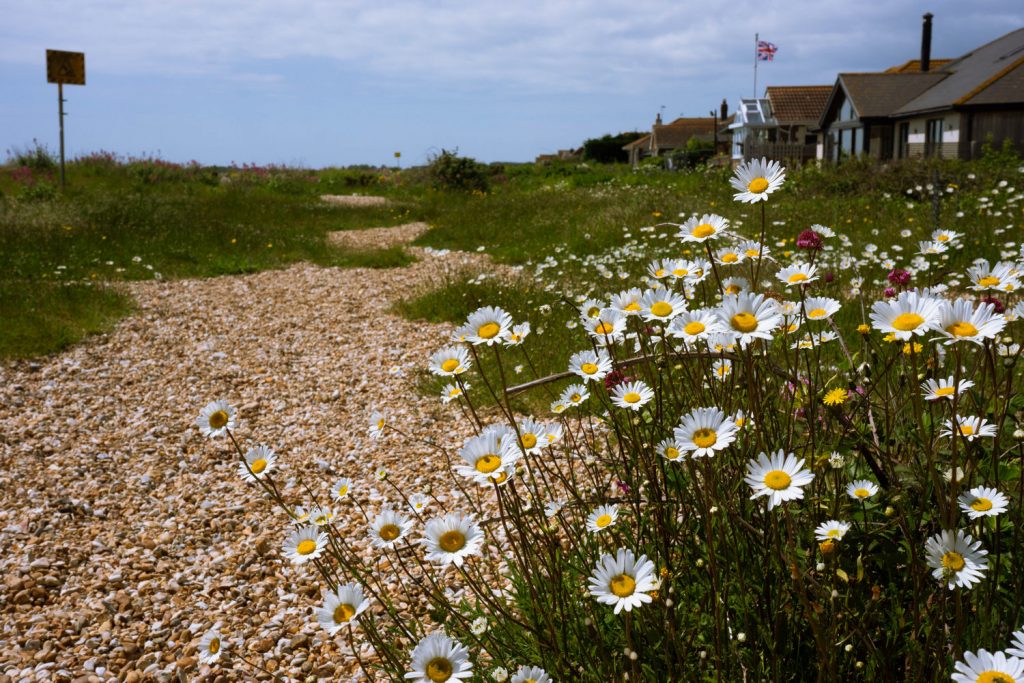
I’ve always observed this with the point of view that it is a hybrid, or novel ecosystem, that is, non-native plants are becoming naturalised and forming something new. As there are existing natives here, it is ‘hybrid’, rather than ‘novel’ (which would be dominated by non-natives). In light of recent work, thoughts and influences (see my previous posts), I also now see this as an emergent, or perhaps transient, shrubscape. Shrubscapes exist as vibrant and mixed communities, generally in poor or hostile environments where there is too much stress to support trees, or at least extensive tree cover. Heathland, Mediterranean maquis or certain desertscapes are some examples. Shrubscapes can also be an ecotone (transitional ecosystem) between two different biomes, typically woodland/forest and meadow/prairie.
On my recent visit I was particularly keen to look at the shrub/scrub tree elements and it didn’t disappoint. First thing I encountered was a scrub holm oak, Quercus Ilex. It was in flower and looking happy. It probably won’t get much bigger with this degree of exposure.
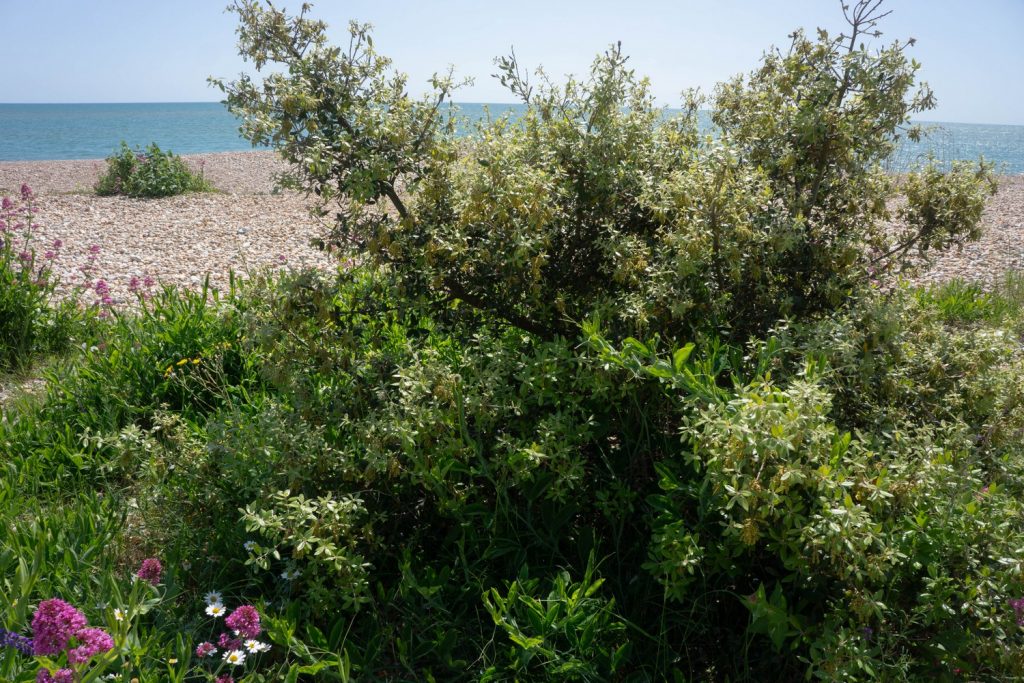
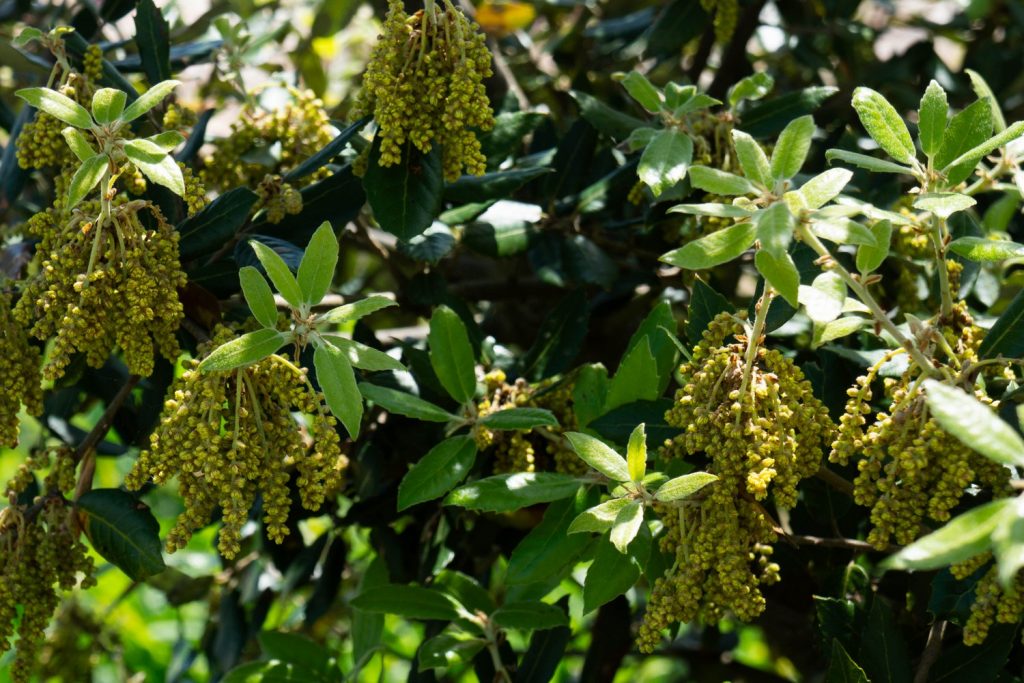
There were plenty of Buddleia in the same exposed position, with last year’s growth making sculptural forms. Some consider this an invasive plant, I say it is a successful pioneer and climate adapted plant. It’s not called butterfly bush for nothing.
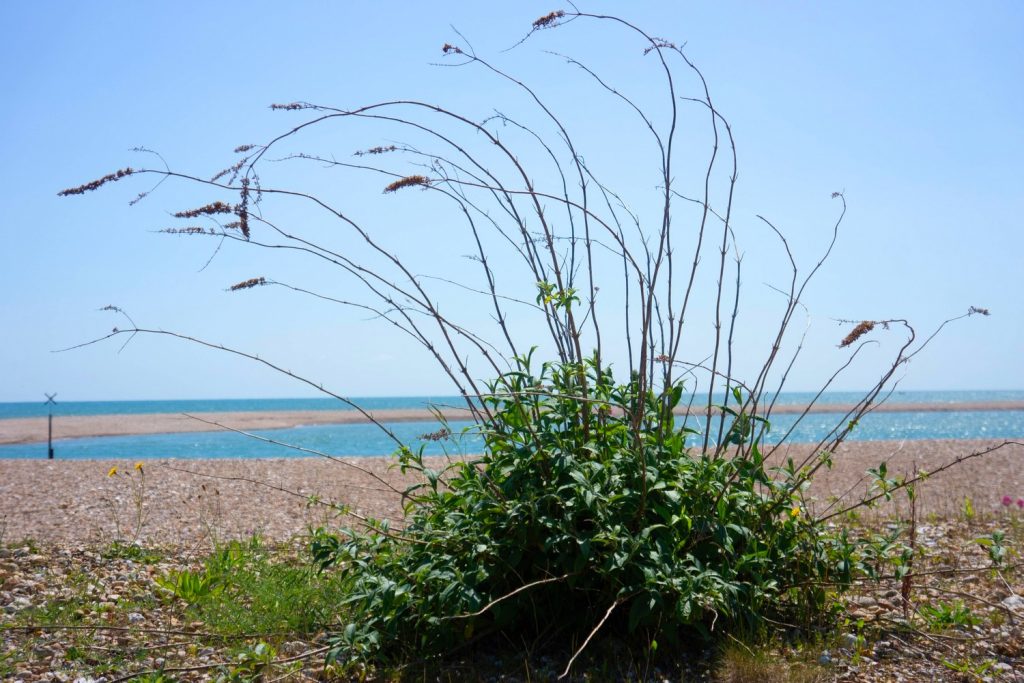
Roses are quite happy here too, with our native dog rose, Rosa canina, being prostrate where not sheltered amongst other shrubs. Rosa rugosa is happy to stand alone and do its thing.
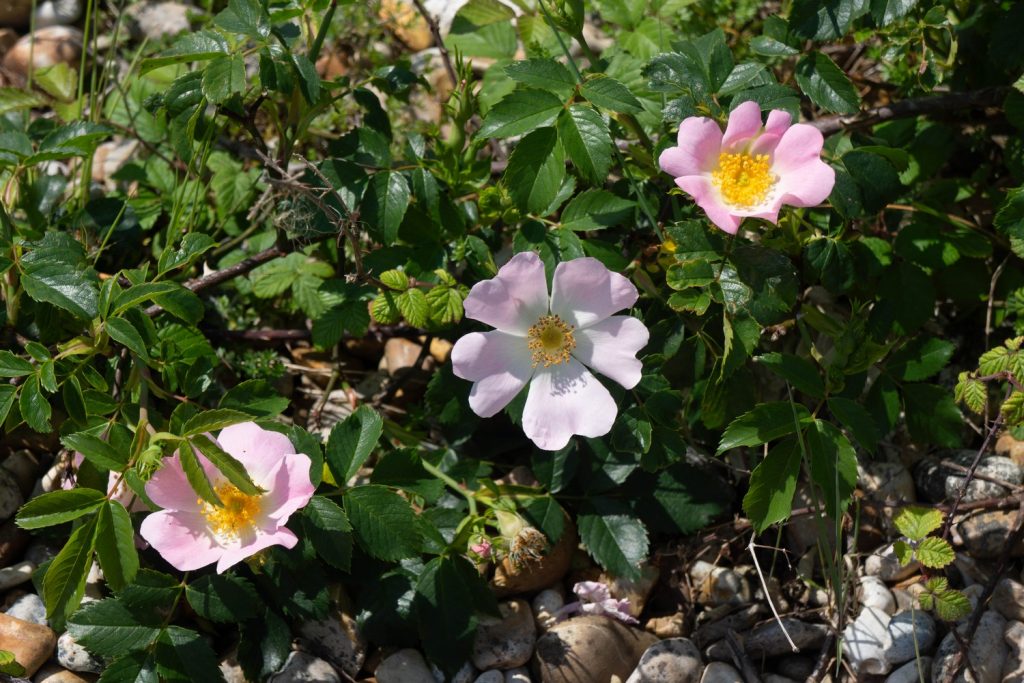
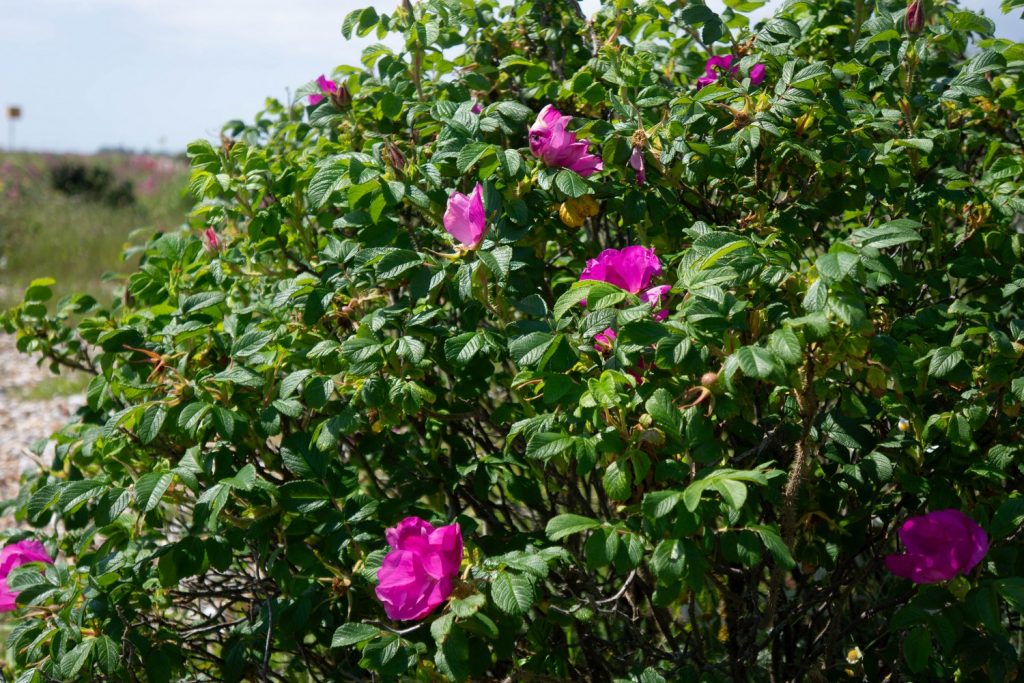
Our native oak, Quercus robur, has made a number of stunning scrub trees (a name too poor for their beauty) and like the holm oak, will be slow to get much bigger with this level of wind exposure.
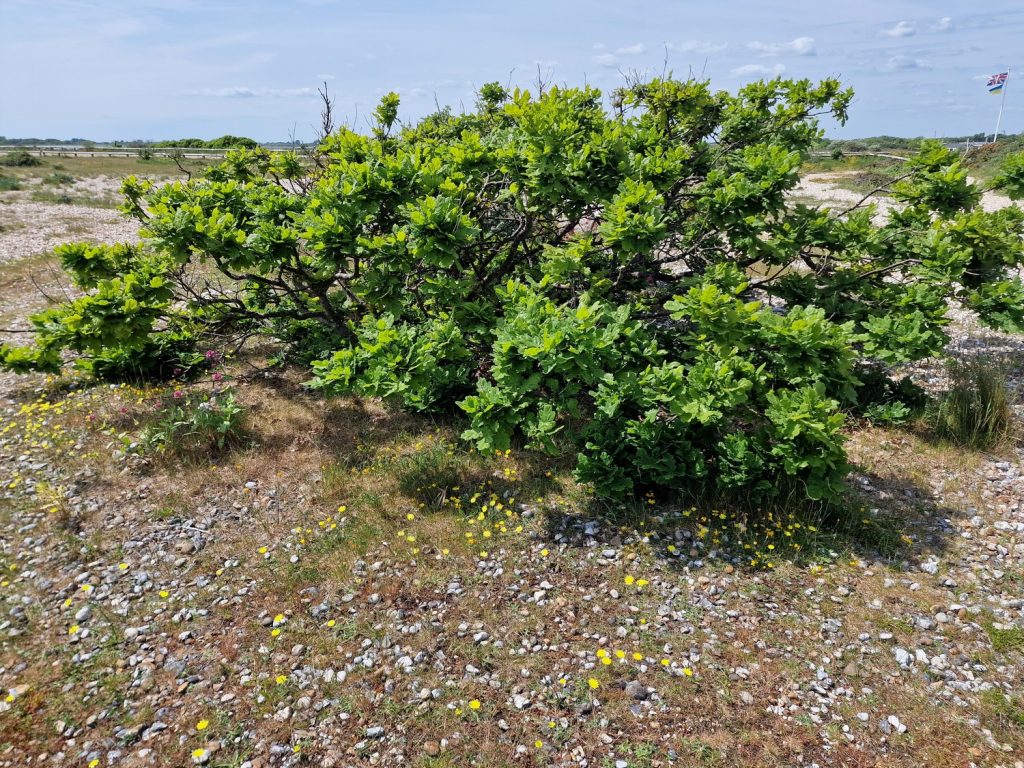
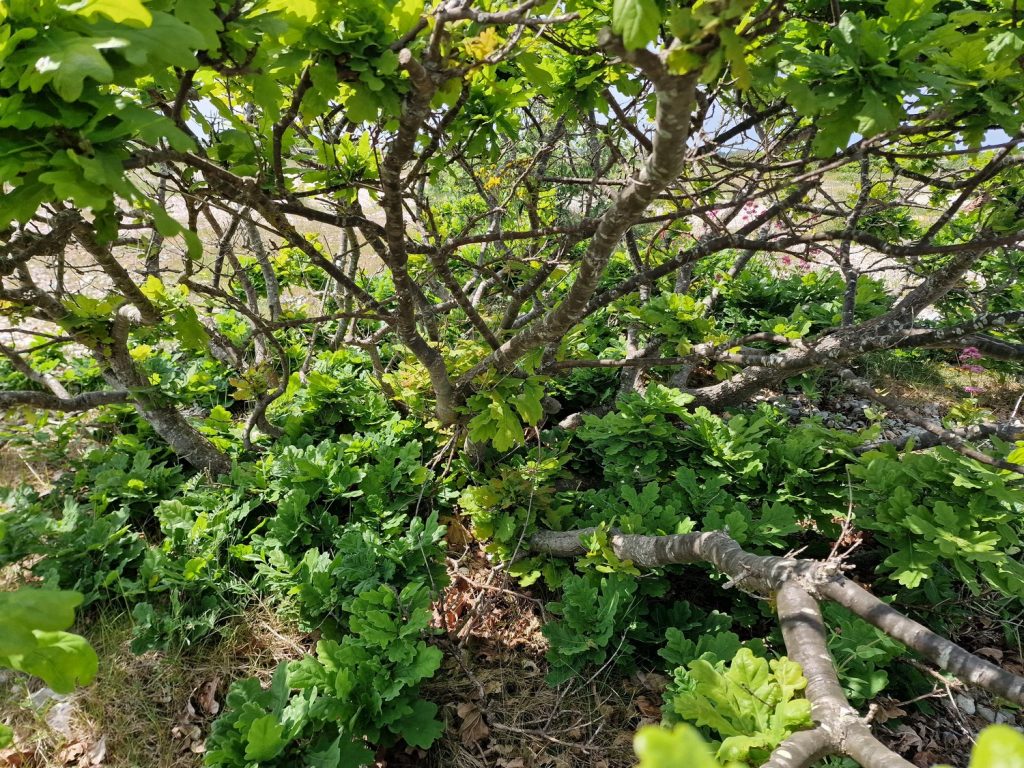
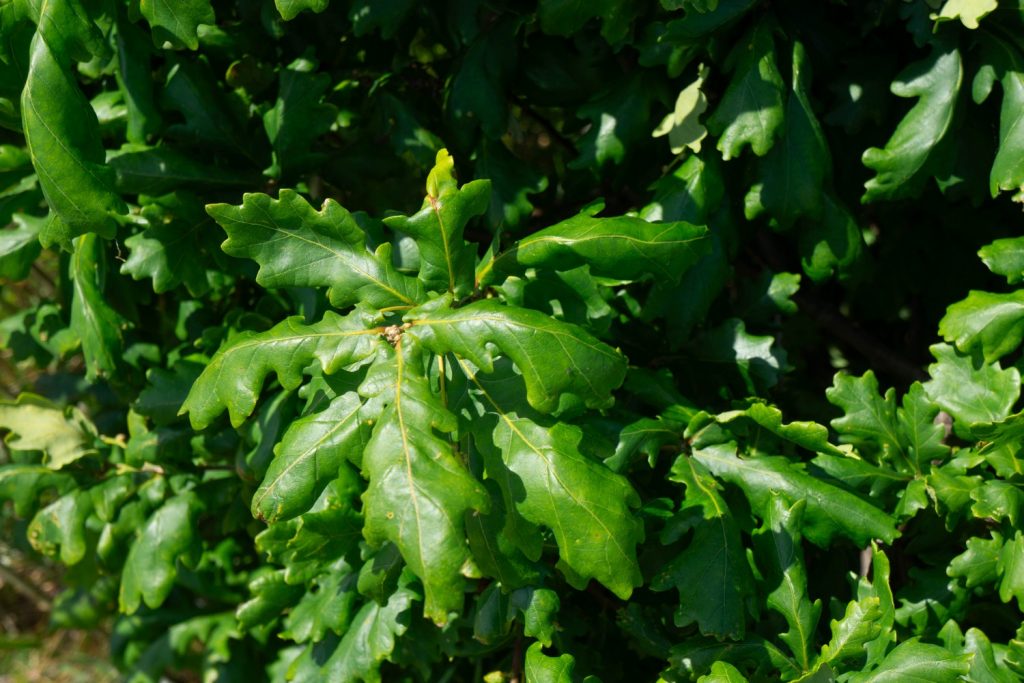
There is also a Swedish whitebeam, Scandosorbus intermedia (used to be Sorbus x intermedia), looking beautiful and flowering profusely.
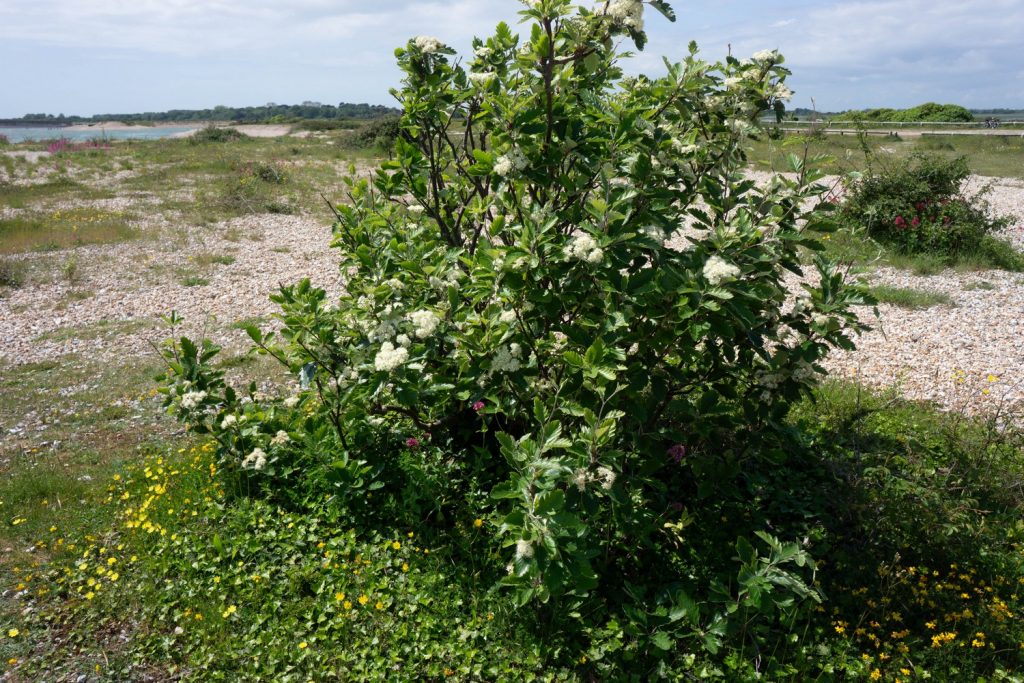
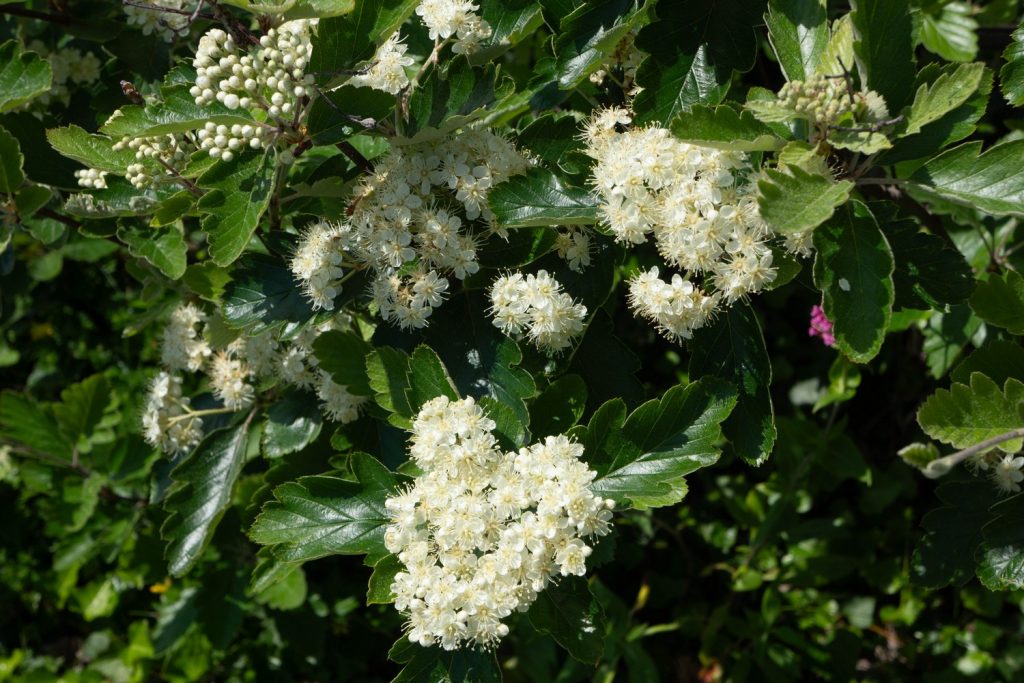
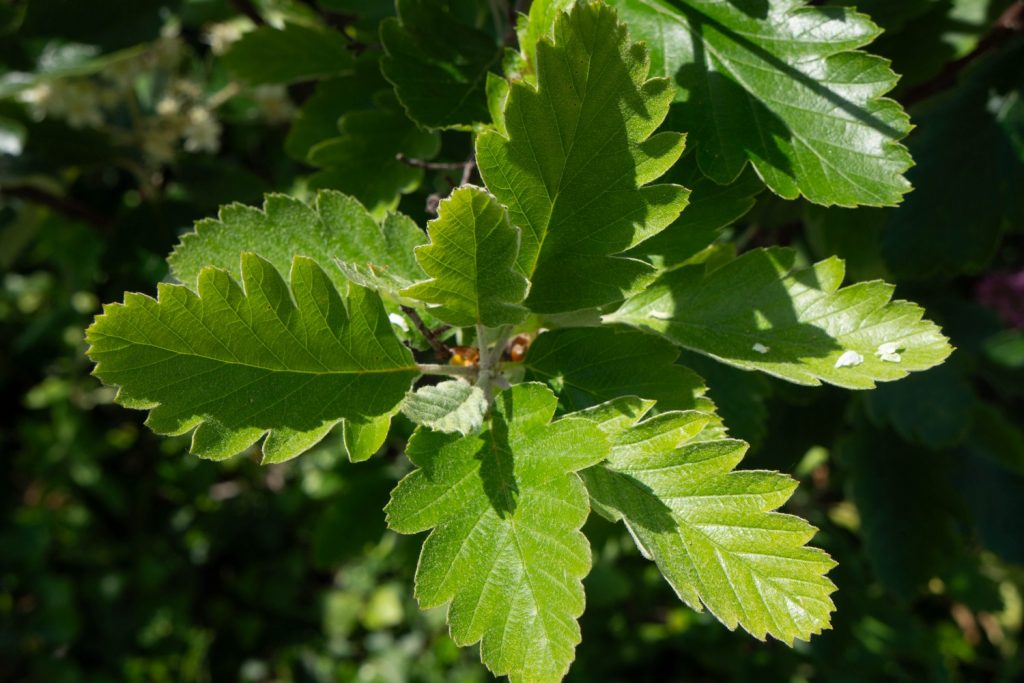
There are a number of scrub apples growing in the shingle, slightly nearer the houses, presumably from discarded apple cores.
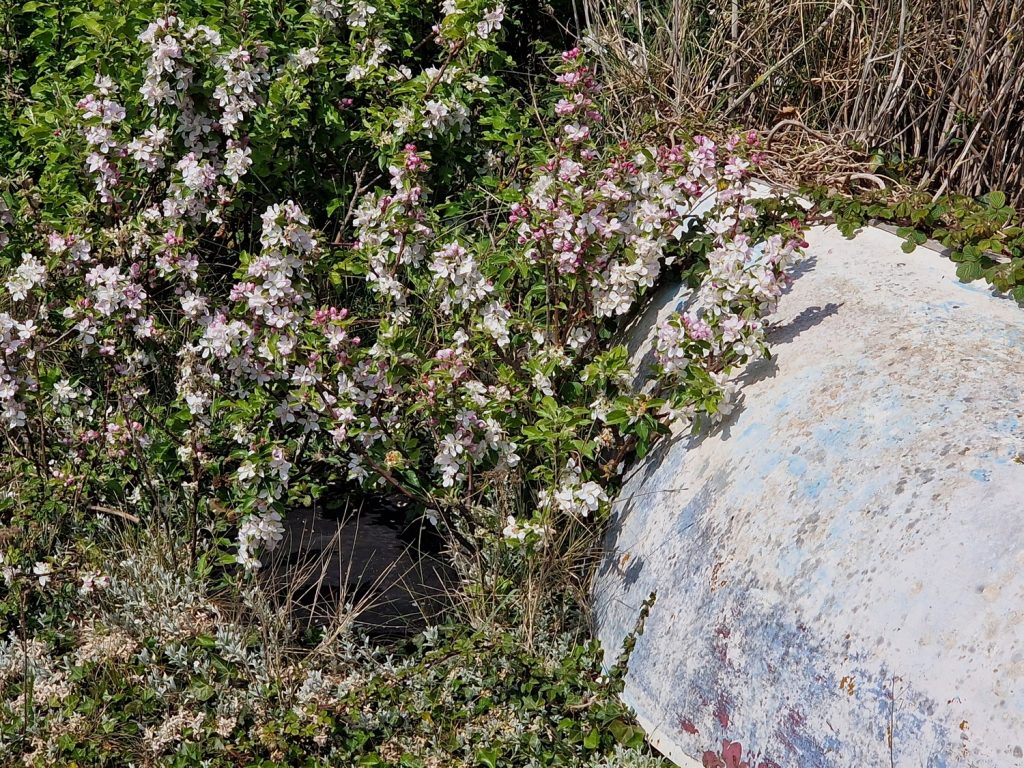
Two other species that are prominent are gorse, Ulex europaeus and Spanish broom, Spartium junceum. The former is of course, very native, the latter, not. Both doing much the same job though.
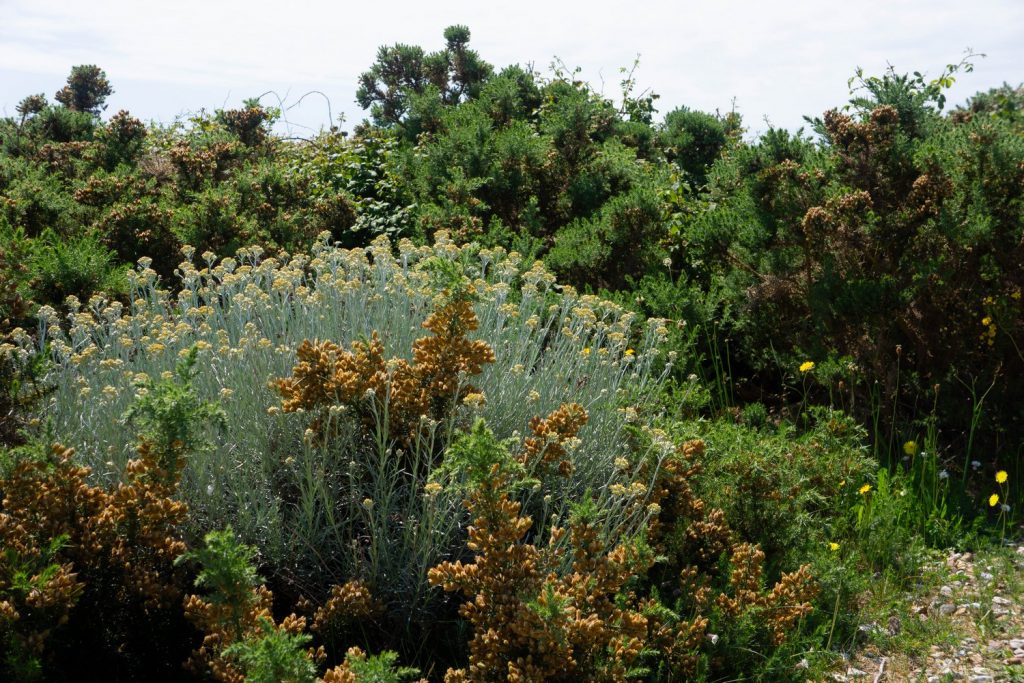
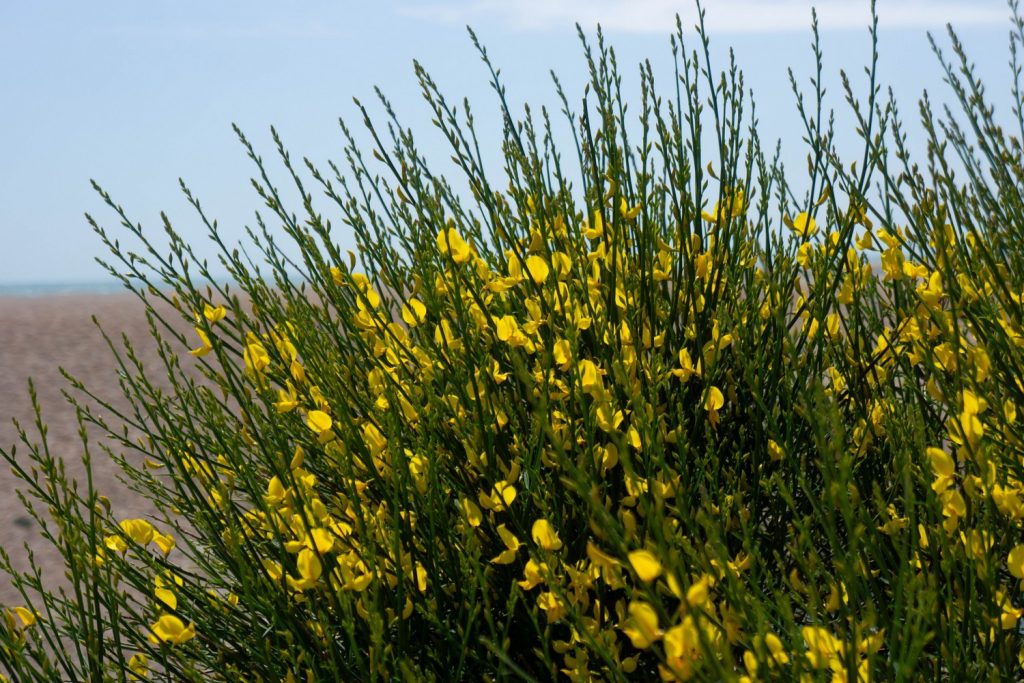
Another shrub that is loved by the bees is Cotoneaster microphyllus (possibly horizontalis, I need to check in winter), making prostrate mats over the shingle. Again, derided as invasive but here forming a valuable part of this hybrid ecosystem.
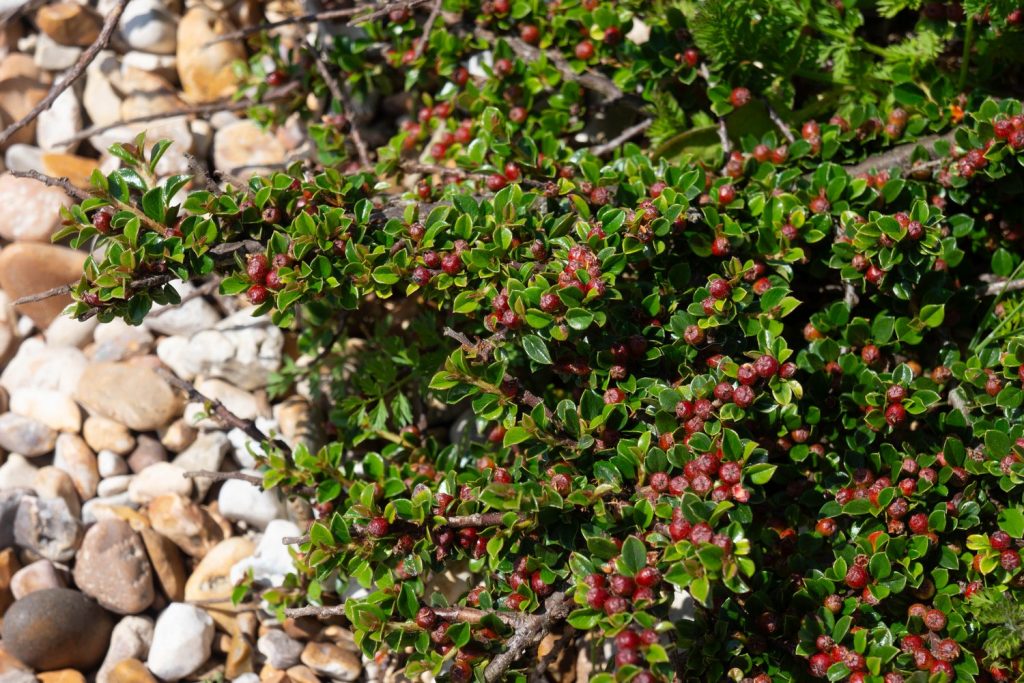
Back from the shingle spit that these plants are on is another beach, on a slightly more sheltered lagoon. Here there is greater diversity, including more oaks, hawthorns, elder and one of the larger Cotoneaster species. When you get to walk around the roads between the bungalows, there are of course many more coastal plants that thrive in the smaller microclimates created there.
On the vegetated areas there is also an equally interesting hybrid mix of perennial and annual plants, though that is not the focus of this article. I will leave you with this shot of red valerian, Centranthus ruber.
